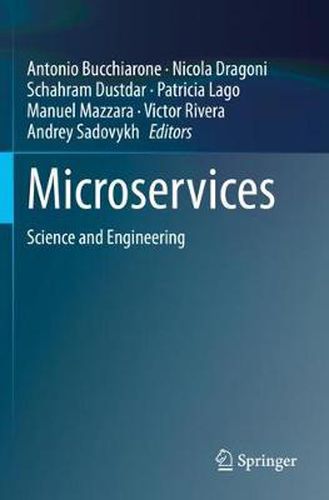Readings Newsletter
Become a Readings Member to make your shopping experience even easier.
Sign in or sign up for free!
You’re not far away from qualifying for FREE standard shipping within Australia
You’ve qualified for FREE standard shipping within Australia
The cart is loading…






This title is printed to order. This book may have been self-published. If so, we cannot guarantee the quality of the content. In the main most books will have gone through the editing process however some may not. We therefore suggest that you be aware of this before ordering this book. If in doubt check either the author or publisher’s details as we are unable to accept any returns unless they are faulty. Please contact us if you have any questions.
This book describes in contributions by scientists and practitioners the development of scientific concepts, technologies, engineering techniques and tools for a service-based society. The focus is on microservices, i.e cohesive, independent processes deployed in isolation and equipped with dedicated memory persistence tools, which interact via messages. The book is structured in six parts. Part 1 Opening analyzes the new (and old) challenges including service design and specification, data integrity, and consistency management and provides the introductory information needed to successfully digest the remaining parts. Part 2 Migration discusses the issue of migration from monoliths to microservices and their loosely coupled architecture. Part 3 Modeling introduces a catalog and a taxonomy of the most common microservices anti-patterns and identifies common problems. It also explains the concept of RESTful conversations and presents insights from studying and developing two further modeling approaches. Next , Part 4 is dedicated to various aspects of Development and Deployment . Part 5 then covers Applications of microservices, presenting case studies from Industry 4.0, Netflix, and customized SaaS examples. Eventually, Part 6 focuses on Education and reports on experiences made in special programs, both at academic level as a master program course and for practitioners in an industrial training. As only a joint effort between academia and industry can lead to the release of modern paradigm-based programming languages, and subsequently to the deployment of robust and scalable software systems, the book mainly targets researchers in academia and industry who develop tools and applications for microservices.
$9.00 standard shipping within Australia
FREE standard shipping within Australia for orders over $100.00
Express & International shipping calculated at checkout
This title is printed to order. This book may have been self-published. If so, we cannot guarantee the quality of the content. In the main most books will have gone through the editing process however some may not. We therefore suggest that you be aware of this before ordering this book. If in doubt check either the author or publisher’s details as we are unable to accept any returns unless they are faulty. Please contact us if you have any questions.
This book describes in contributions by scientists and practitioners the development of scientific concepts, technologies, engineering techniques and tools for a service-based society. The focus is on microservices, i.e cohesive, independent processes deployed in isolation and equipped with dedicated memory persistence tools, which interact via messages. The book is structured in six parts. Part 1 Opening analyzes the new (and old) challenges including service design and specification, data integrity, and consistency management and provides the introductory information needed to successfully digest the remaining parts. Part 2 Migration discusses the issue of migration from monoliths to microservices and their loosely coupled architecture. Part 3 Modeling introduces a catalog and a taxonomy of the most common microservices anti-patterns and identifies common problems. It also explains the concept of RESTful conversations and presents insights from studying and developing two further modeling approaches. Next , Part 4 is dedicated to various aspects of Development and Deployment . Part 5 then covers Applications of microservices, presenting case studies from Industry 4.0, Netflix, and customized SaaS examples. Eventually, Part 6 focuses on Education and reports on experiences made in special programs, both at academic level as a master program course and for practitioners in an industrial training. As only a joint effort between academia and industry can lead to the release of modern paradigm-based programming languages, and subsequently to the deployment of robust and scalable software systems, the book mainly targets researchers in academia and industry who develop tools and applications for microservices.